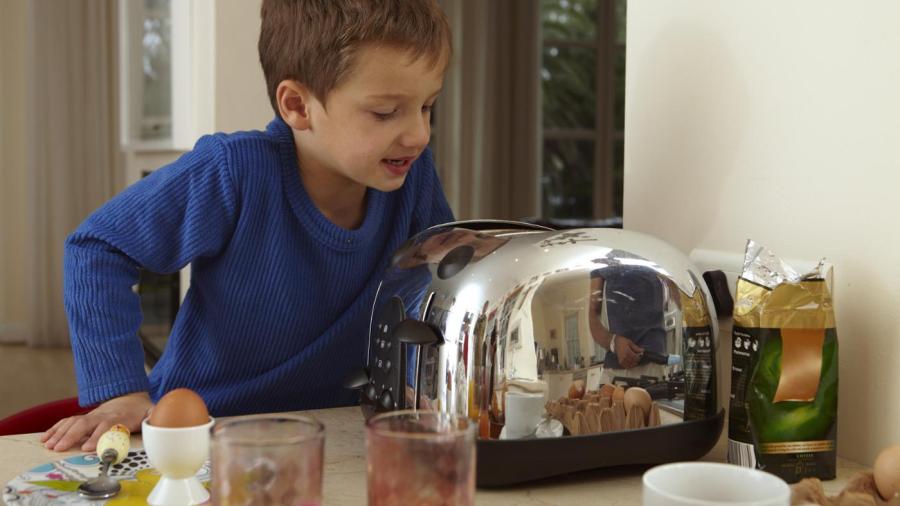How Is the Energy Transferred in a Toaster?

Energy is transferred in a toaster by converting the electrical energy into heat energy, through the use of a high-resistance alloy wire. The resistance of the wire to the flow of electrons creates heat and causes the wire to glow, giving off radiant, or infrared, heat.
A toaster transfers energy through the resistive properties of the wire used. The wire, typically a nickel-chromium alloy, is either stretched across a mica plate or arranged in a coil pattern. The nickel-chromium alloy, commonly referred to as nichrome, offers a high resistance and does not oxidize at high temperatures. The composition of the nichrome alloy is carefully controlled during the manufacturing process, giving the metal a precise and accurate resistance. As electricity is forced through the wire, the resistance to the flow of electrons generates a large amount of heat, which causes the wire to glow brightly.
When arranged in slots that are typically an inch wide, a uniform transfer of heat is provided by the glowing wire. In modern toasters, the transfer of energy is monitored and controlled by the appliance itself, allowing users to choose different settings. The same principle of using electrical resistance to generate heat is applied within toaster ovens, electric ovens and many different types of space heaters.





